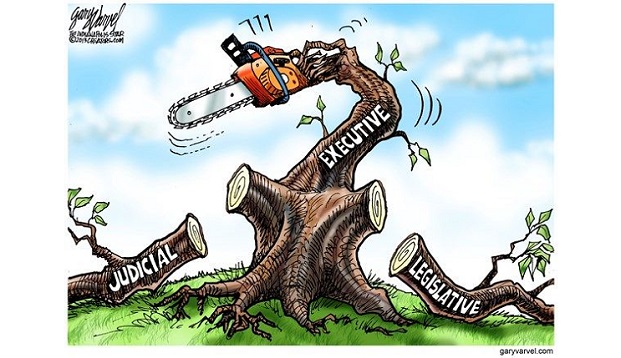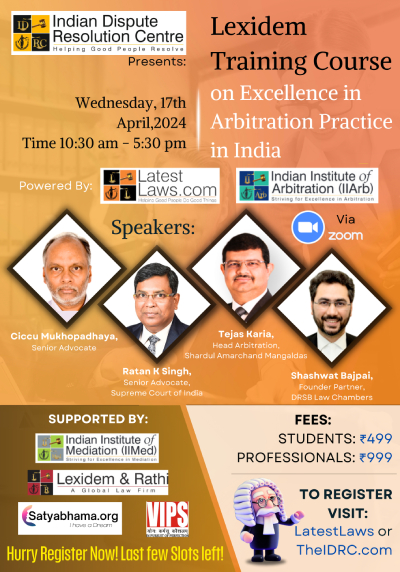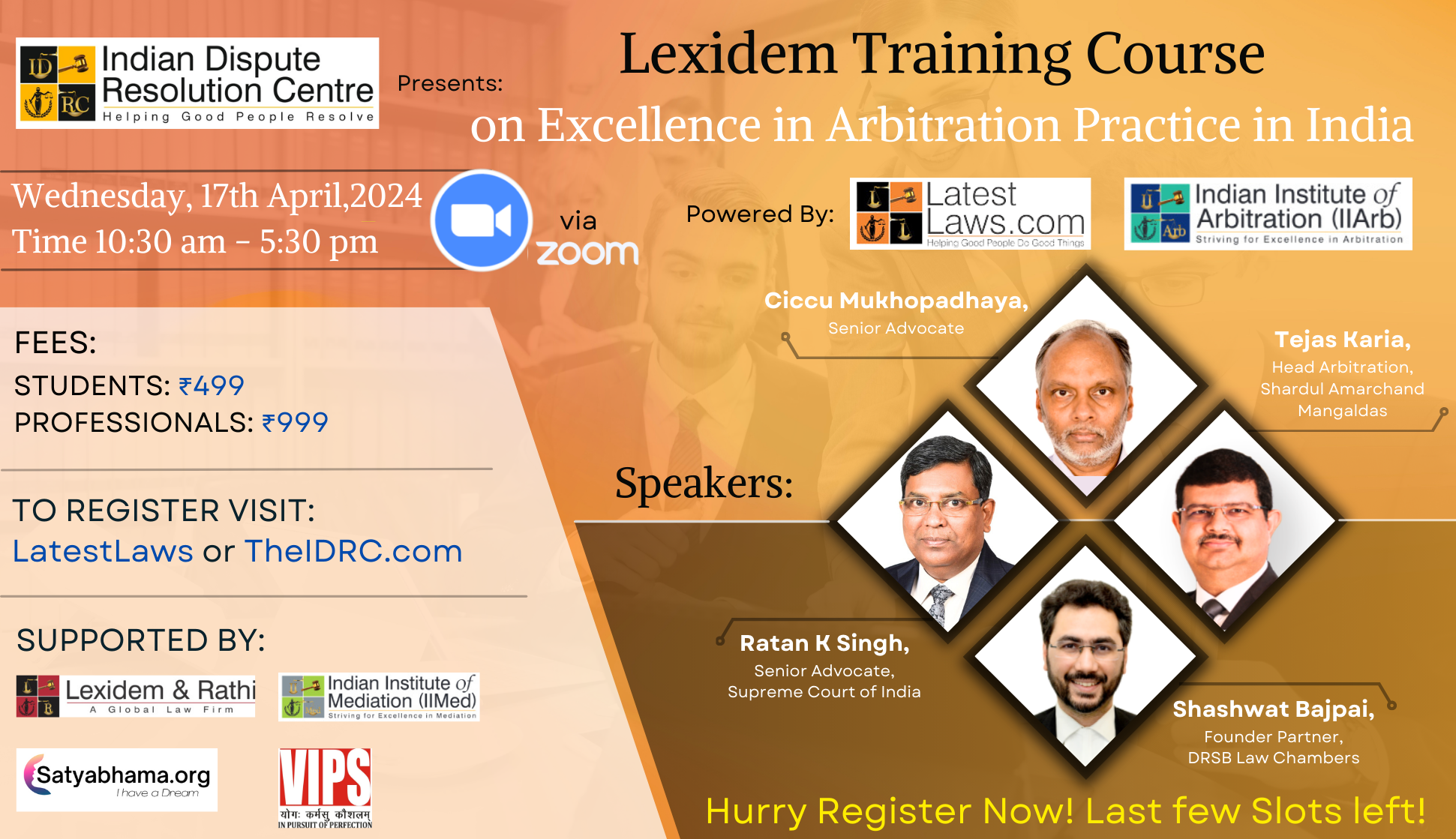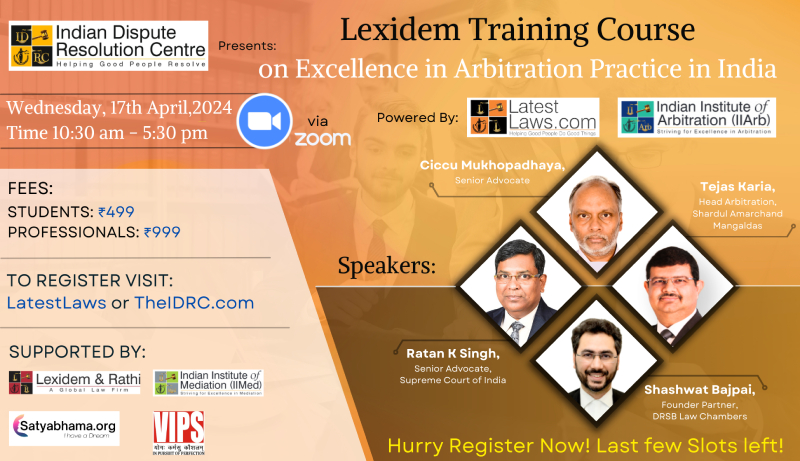The Author, Deb Zyoti Das, is a 2nd-year, BBA.LLB student at Himachal Pradesh National Law University, Shimla. He is currently interning with LatestLaws.com.
Introduction
The Constitution of India has many special features that distinguish it from other constitutions of the world. It is the longest Constitution; it is comprehensive and detailed since it deals with the complex and diverse situation that prevailed (and still prevails) at the time of its writing and adoption after the British granted independence to India. It also establishes a federal parliamentary form of Government in which the roles of the executive, the legislature and the judiciary are clearly defined and delineated.
The essence of parliamentary Government is that it has a head of state who is also the constitutional head. However, the real executive powers are vested in the Council of Ministers with the Prime Minister, who take executive action on behalf of the head of state (the President of India) and is the first organ of India. The legislature consisting of the President, the Parliament (the Lok Sabha & the Rajya Sabha) and the state legislatures, form the second organ of India. The third organ is the judiciary, whose provisions are contained in Chapters IV and VI of the Constitution. Unlike England, the Parliament is not supreme in India- it is the Constitution, which is supreme. The Indian Parliament draws all its powers from the Constitution, and in that sense, it is not a sovereign body.
The Constitution of India delineates a certain separation of the three organs of India. The separation of powers means the distribution of the Government’s political, administrative and judicial duties. It minimises the risk of unconstitutional government excesses since the implementation, compliance and execution of laws is needed to be sanctioned by all the three branches.
In this article, the author talks in brief about the separation of power in practice in India. Then, the article concerns itself mainly with the overlap of powers between the three organs and how a specific limit of overlapping helps the federal structure.
Separation of Power amongst the organs of Government
The term “trias politica” or “separation of powers” was coined by Charles-Louis de Secondat, baron de La Brède et de Montesquieu, an 18th century French social and political philosopher. His publication, Spirit of the Laws, is considered one of the great works in the history of political theory and jurisprudence, and it inspired the Declaration of the Rights of Man and the Constitution of the United States. Under his model, the political authority of the state is divided into legislative, executive and judicial powers. He asserted that, to most effectively promote liberty, these three powers must be separate and acting independently.
Separation of powers, therefore, refers to the division of government responsibilities into distinct branches to limit any one branch from exercising the core functions of another. The intent is to prevent the concentration of power and provide for checks and balances.
Although the Constitution of India does not provide strictly for the separation of powers, these articles provide a general guideline:
- Article 50[i]: This states that the State or the Government concerned will take appropriate steps to ensure that the judicial branch is separated from the functioning and working of the executive branch.
- Article 121[ii] & 211[iii]: It, in a way, provides for the separation of the legislature and the judiciary. This article states that the conduct of justice or the way a judge discharges his duties of any Court cannot be discussed in the legislature (state or union).
- Article 122[iv] & 212[v]: This article is aimed at keeping the judiciary (the law interpreting body) and the legislature (the law-making body) separated. It does so by stripping the judiciary of any power to review and question the validity of proceedings that take in a legislature or the Parliament.
- Article 361[vi]: This article separates the judiciary and the executive. It states that the President or any governor of any state is not answerable to any court in the country for actions and activities are taken in performance/exercise of the powers and duties of their office.
Functional Overlapping amongst the organs of Government
While separation of powers is key to the workings of Indian Government, no democratic system exists with an absolute separation of powers or an absolute lack of separation of powers. Governmental powers and responsibilities intentionally overlap; they are too complex and interrelated to be neatly compartmentalised. As a result, there is an inherent measure of competition and conflict among the branches of Government. Throughout Indian history, there also has been an ebb and flow of pre-eminence among the governmental branches. Such experiences suggest that where power resides is part of an evolutionary process.
Every organ is, in a way, overlapped in its practical functioning with the other two organs of the Government. This overlapping enables the organs to act as a check on each other without too much interference.
Any institution during its work appears to intervene in the work of a particular official because it is not practicable to exclusively delimit roles in its relations with the public. Therefore, overlaying roles continue to occur in such entities, often though operating within the scope of their own forces.
- Overlapping Powers of Legislature
|
|||||||||||||
- Overlapping Powers of The Executive
| With Judiciary | With Legislative |
|
|
- Overlapping Powers of The Judiciary
| With Executive | With Legislative |
|
|
Hence, we can see that although the Constitution mentions a certain amount of separation of powers, it does not do so strictly to keep every organ in check and ensure that it is not entirely free in exercising powers vested in it without any restraint or ulterior motive that will not be in the public interest. In addition to functional overlapping, there is a lack of administrative distinction between the three divisions of the Indian system.
But, as is said, everything has pros and cons, and so does the overlapping of the three organs of the Government.
Issues in Overlap
The problems in the overlapping of practical powers of the governmental organs are:
- The biggest issue of overlap might be that a particular organ cannot be held accountable for its decision, for example, Judicial Decision in 2G case, Coal Block case. (Unaccountability)
- The faith of the public in the institutions of the Government plays a very crucial role in such a complex and vest democracy. The organs repeated interventions into others’ decisions leads to the diminishing of the faith of the people in the quality, efficiency and integrity of them. (Erosion of faith)
- It undermines the spirit of democracy as too much accumulation of powers in organs of Government undermines the principle of check and balance. (Accumulation of power)
- Excessive infringement on each other jurisdiction may impede the smooth functioning of Government and hinder public service and overall development (Adverse effect on development)
Benefits of Overlap
The functional overlapping of the three institutions also provides benefits.
- The accountability and equality in governance are enhanced by enabling power-sharing laws (Rule of Law).
- The overlap prevents arbitrary actions by the other two organs of the Government; an example is the power of judicial review of the Apex Court of India. (Check and Balance)
- Constitutional demarcations of overriding powers decrease the scope of conflict among the government organs. (Check arbitrariness)
- The overlapping functions induce power-sharing and also provides power decentralisation, thus ensuring that the three organs can work hand-in-hand to solve problems faster. (Cooperation)
Conclusion
In the Indian situation, the principles of constitutional restraint and confidence have been implemented in such a manner that no institution can, by means of a specific or necessary clause, usurp the duties or powers delegated to another institution and cannot detach itself from the basic roles that belong to the organ in compliance with the Constitution.
A Parliamentary structure with a rigid division of powers is unnecessary and unsustainable for a democratic politics and complex population such as India. Nevertheless, the institutional partnership of the three government institutions is feasible with judicial and measured constitutional functional overlap. Such cooperation bridges the legislative, executive and judicial divide that makes Government operate smoothly.
[i] Art. 50, the Constitution of India.
[ii] Art. 121, the Constitution of India.
[iii] Art. 211, the Constitution of India.
[iv] Art. 122, the Constitution of India.
[v] Art. 212, the Constitution of India.
[vi] Art. 361, the Constitution of India.
[vii] Art. 142, the Constitution of India.
Picture Source :




























